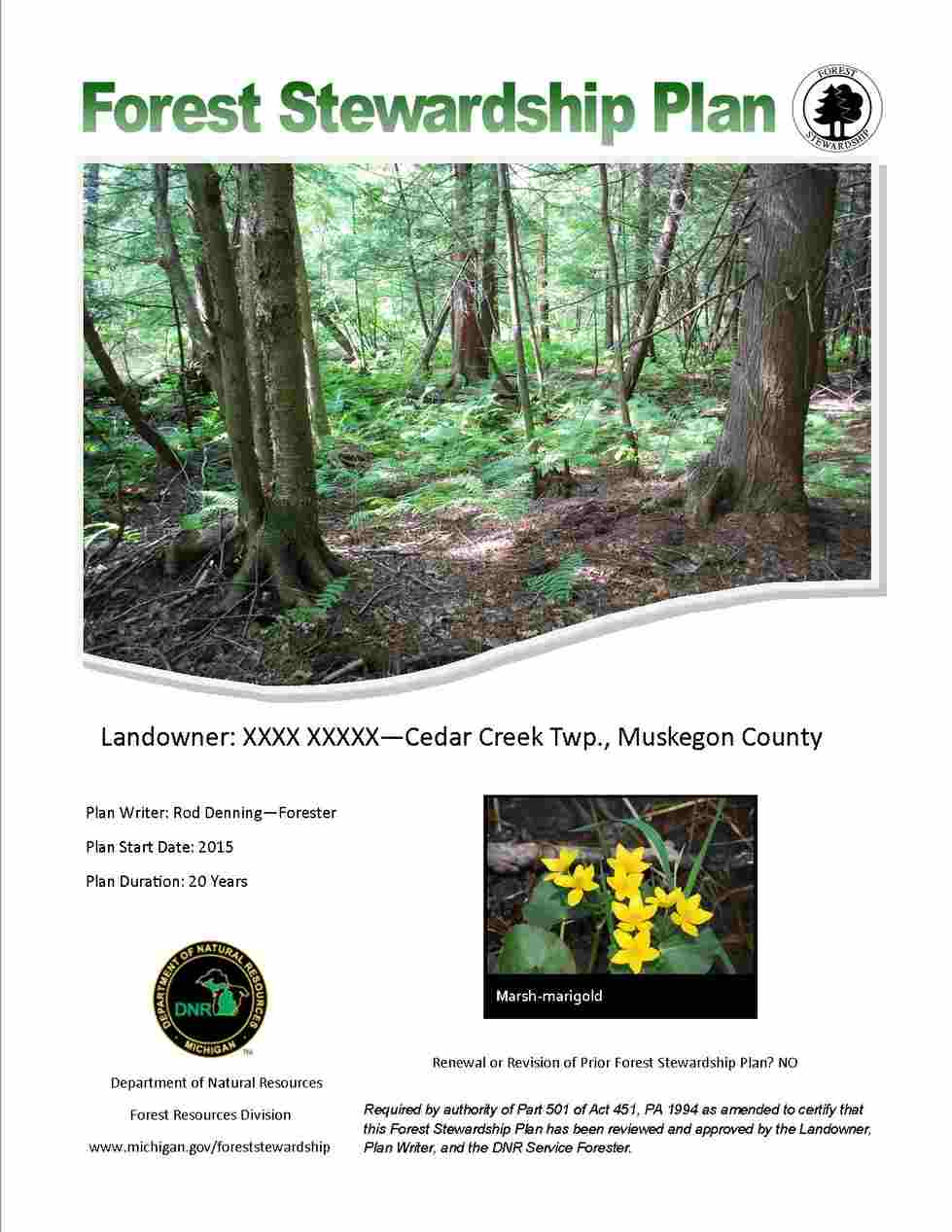Forest Stewardship Plans
The Forest Stewardship Program was created by the U.S. Forest Service (USFS) in 1991 and is authorized by the Cooperative Forestry Assistance Act of 1978. The Forest Stewardship Program was established to encourage nonindustrial private forest landowners to actively manage their property. The voluntary program makes available to landowners the services of foresters, wildlife biologists, and other resource professionals needed to create and implement a Forest Stewardship Plan. Few of Michigan’s 400,000 private landowners take this step, but those that do demonstrate a commitment to effectively manage their land in a sustainable manner. The Department of Natural Resources (DNR) administers the Forest Stewardship Program in Michigan.

All Forest Stewardship Management Plans are expected to follow these guidelines:
- Be prepared or verified as meeting the minimum standards of a Forest Stewardship Management Plan by a professional resource manager, and be approved by the State Forester or a representative of the State Forester.
- Document authorship.
- Clearly state landowner objectives.
- Describe current forest condition or condition class.
- Describe desired forest condition or condition class.
- Include practices and activities aimed at reaching the desired forest condition or condition class.
- Document a feasible strategy and timeline for practice and activity implementation.
- Describe any suggested monitoring activities to be done by the forester or landowner.
- Be developed for a specified management period that adequately allows for progress with the landowner’s long term stewardship objectives.
- Be reviewed and renewed, revised or rewritten at the end of the specified management period or sooner as needed, to be considered current
Landowners must also be involved in the development of each plan, setting clear objectives, timetables, and targets.
The resource professional that prepares each plan will describe and evaluate a number of resources elements. These resource elements include:
- Soil and Water
- Biological diversity
- Range
- Aesthetic quality
- Recreation
- Timber
- Fish and wildlife
- Threatened and endangered species
- Forest health
- Archeological, cultural and historic sites
- Wetlands
- Fire
- Carbon cycle
AWRI has promised to assist private landowners in the development of ten Forest Stewardship Plans by the end of June 2015. All of these plans will be created for properties identified as high priority and located in the Lower Muskegon River Watershed. As of this posting, AWRI has completed six such plans covering 734 acres.
